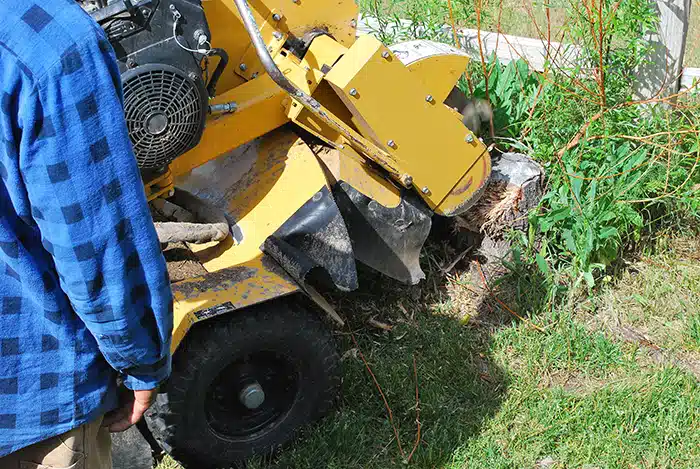After removing a tree, many homeowners consider leaving the stump behind to save time or money. However, an unattended stump can lead to bigger problems than you might expect.
From attracting unwanted pests to spreading harmful diseases, tree stumps pose serious risks to your landscape and surrounding vegetation. Stump grinding is a critical step in complete tree removal and plays a major role in maintaining the health and safety of your property.
Tree Stumps Attract Pests That Threaten Your Yard
Decaying stumps provide the perfect environment for a wide range of invasive pests.
- Termites are especially drawn to rotting wood and can quickly spread from the stump to nearby homes or wooden structures.
- Carpenter ants and beetles often make stumps their home, further weakening the wood and nesting underground.
- Rodents and snakes may also burrow near or under stumps, creating health hazards and potential infestations.
- Once pests settle into a stump, they may migrate to healthy trees or into your house in search of more food and shelter.
- Even wasps and bees may establish nests inside hollow or softened stump cavities.
Grinding the stump removes this food source and eliminates a major attraction for unwanted pests before they can invade your yard.
Stumps Can Spread Fungal Infections and Tree Diseases
Leftover stumps can become a breeding ground for fungi and diseases that harm other plants.
- Many tree diseases, such as root rot and Dutch elm disease, can continue to thrive in the stump’s remaining root system.
- Fungi like honey fungus often begin in decaying stumps and spread underground to infect healthy trees and shrubs.
- Mold and mildew from rotting wood can release spores that affect garden beds and other landscape features.
- Some tree species regenerate from stumps, producing weak shoots that are prone to disease and rarely thrive.
- If the original tree was removed due to disease, leaving the stump behind risks reintroducing or prolonging the problem.
By grinding the stump below the soil level, you help break the disease cycle and protect the health of your entire yard.
Stump Grinding Supports Long-Term Landscape Health and Safety
Removing the stump fully is not only good for pest and disease prevention—it’s better for your property overall.
- Stumps and remaining roots can cause tripping hazards, especially in areas where children or pets play.
- Mowing and yard maintenance become more difficult around stumps, increasing the risk of injury or damage to lawn equipment.
- Stumps can delay future landscaping projects and interfere with planting or construction plans.
- As the stump decomposes slowly, it may create soft spots in the ground that collapse unexpectedly.
- Grinding leaves the area level and usable, whether you want to reseed grass, plant a garden, or expand outdoor living space.
A smooth, stump-free yard not only looks better—it’s safer, healthier, and easier to maintain year-round.
Stump grinding is more than a cosmetic upgrade—it’s a vital step in preventing pests, stopping the spread of tree diseases, and protecting your yard’s future health. By removing stumps thoroughly and professionally, you can avoid infestations, promote healthy growth, and make better use of your outdoor space. Investing in stump grinding today saves time, money, and trouble down the line.

